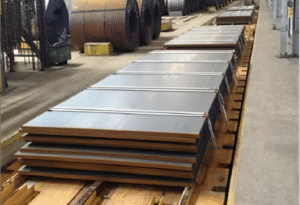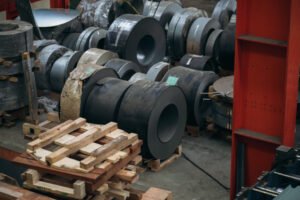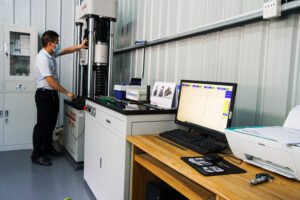Stainless Steel Sheet Hardness Explained: Rockwell vs Brinell for 304 & 316
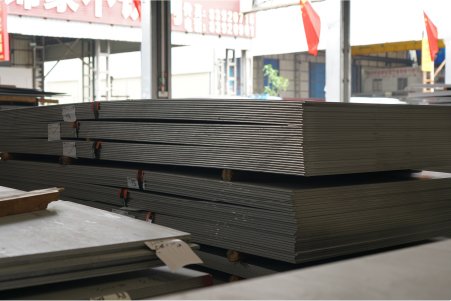
Are you struggling to select the right stainless steel sheet for your application? The wrong hardness can lead to premature material failure, unforeseen costs, and critical project delays. Understanding the nuances of hardness testing is the first step toward securing a reliable and efficient supply chain.
Stainless steel sheet hardness is a critical measure of its resistance to permanent indentation and is primarily determined using the Rockwell or Brinell tests. For austenitic grades like 304 and 3161, these tests quantify the material's durability and suitability for specific manufacturing and construction applications.
Choosing between 304 and 316 stainless steel often hinges on specific mechanical properties, and hardness stands out as a critical predictor of performance. But what do the numbers from a Rockwell or Brinell test truly signify for your project's success? This value is far more than a figure on a spec sheet; it's a direct indicator of the material's durability and formability. Let's explore why this single metric can make or break your entire endeavor.
In my role as Global Business Director at MFY, I’ve repeatedly seen how a minor misunderstanding of material hardness can cascade into major operational issues. I recall a case with a new client in the automotive parts sector in India. They had sourced material from another supplier that technically met the grade standard but failed in production due to inconsistent hardness. The sheets were too hard, causing excessive wear on their stamping dies and leading to costly downtime. This experience underscores that hardness is not just about meeting a standard; it's about ensuring manufacturability, longevity, and overall efficiency. The choice between Rockwell and Brinell testing isn't arbitrary—it's a calculated decision based on material thickness, required precision, and the end-use environment.
What are the basics of hardness measurement in stainless steel sheets?
Feeling lost in a sea of technical jargon like "indentation resistance" and "work hardening"? This uncertainty can lead you to specify the wrong material, inviting unexpected failures and budget overruns. Let's demystify the core principles of hardness testing to empower your next material decision.
Snippet paragraph: Hardness in stainless steel sheets defines the material's capacity to resist localized plastic deformation, such as scratching or denting. It's measured by pressing a standardized indenter into the surface with a specific force and analyzing the resulting impression to ensure mechanical integrity.
Grasping the concept of hardness is the foundational step, but the real value is in understanding how we quantify it. These tests are not mere academic exercises; they are practical, essential tools that directly dictate the quality and reliability of your final product. For instance, a client of ours manufacturing components for conveyor systems in Southeast Asia depends on precise hardness specifications. The 304 stainless steel sheets we supply must be hard enough to resist constant abrasion from transported goods. A slight deviation in hardness could drastically shorten the equipment's lifespan, leading to operational disruptions and costly replacements. This illustrates why the testing methodology is just as critical as the hardness value itself. The selection of a test, the specific scale used, and the interpretation of the results all have profound implications on whether a stainless steel sheet is truly fit for its intended purpose. By exploring the most common methods, we can see how they provide different, yet equally crucial, insights into the material’s character.
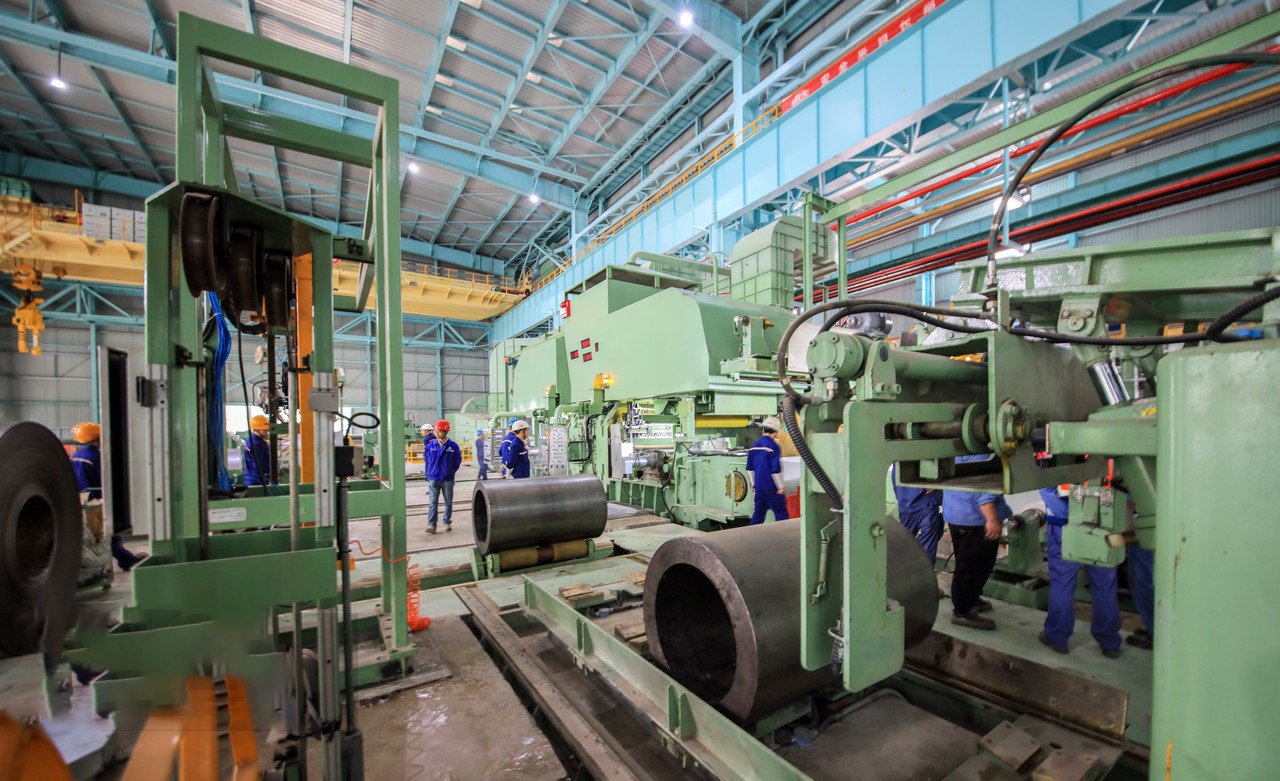
The Core Principle of Indentation Hardness
The fundamental concept behind measuring the hardness of a stainless steel sheet is elegantly simple yet powerfully informative. It involves applying a precisely controlled force through a standardized indenter—typically a hard ball or a diamond cone—onto the surface of the steel. The test then measures the material's reaction to this force, either by the depth of the resulting permanent indentation or the size of the impression. This measurement serves as a direct proxy for the material's ability to resist wear, abrasion, and plastic deformation, which are critical performance indicators in countless applications, from industrial machinery to architectural facades.
This resistance is intrinsically linked to the steel's internal microstructure. For austenitic stainless steels like grades 304 and 316, the microstructure is primarily composed of austenite, a phase that gives these materials their excellent ductility and formability. However, these grades are also subject to work hardening. When the steel is mechanically processed—for example, during cold rolling at our MFY facilities—the crystalline structure deforms, dislocations multiply, and the material becomes harder and stronger. This is why a cold-rolled sheet will have a significantly higher hardness than the same material in its soft, annealed state. Hardness testing allows us to precisely quantify this change and ensure the material has the desired balance of strength and ductility.
I remember working with a client who manufactures high-end kitchen sinks. They needed 304 stainless steel sheets that were soft enough to be deep-drawn into complex sink shapes without cracking (good formability) but also hard enough to resist scratches and dents from daily use (good durability). This presented a classic engineering challenge. Through careful consultation, we helped them specify a narrow hardness range, achieved through a meticulously controlled annealing process. By using hardness testing as our key quality control metric, we were able to deliver coils that consistently met their dual requirements, streamlining their production and enhancing their product quality.
Hardness as a Critical Mechanical Property
Hardness is far more than an isolated property; it is a vital indicator that often correlates directly with other key mechanical characteristics, most notably tensile strength. For many types of steel, a reliable empirical relationship exists between hardness and ultimate tensile strength (UTS). This allows for a quick and non-destructive estimation of the material's strength, which is invaluable for quality control in a high-volume production environment like ours at MFY. Instead of performing a time-consuming and destructive tensile test on every batch, we can use hardness tests to continuously monitor and verify the mechanical properties of our stainless steel coils and sheets.
The practical implications of hardness are evident across all industries we serve. In the construction sector, architectural panels made from our 316 stainless steel must have sufficient hardness to resist dents from hail or minor impacts, preserving the building's aesthetic integrity for decades. For our clients who fabricate equipment for the food and beverage industry, the hardness of 304 stainless steel surfaces is crucial. It ensures the surfaces are smooth, non-porous, and resistant to scratching, which prevents the formation of crevices where bacteria could harbor, thus ensuring sanitary conditions.
This is where the strength of MFY's fully integrated supply chain becomes a tangible asset for our clients. Because we manage the entire production process—from sourcing raw materials and managing our own cold-rolling mills to final processing and export—we have unparalleled control over the final mechanical properties of our products. Our process engineers can fine-tune the parameters of the cold-rolling and annealing cycles with extreme precision to achieve the exact hardness specified by a client. This ensures exceptional consistency, not just within a single coil, but across entire multi-ton orders destined for markets from Russia to the Middle East.
An Overview of Common Hardness Scales
It's crucial to understand that there is no single, universal unit for "hardness." Instead, a variety of scales and methods have been developed, each with its own specific application, advantages, and limitations. The most common methods used for metals like stainless steel are the Rockwell, Brinell, Vickers, and Knoop tests. For the vast majority of stainless steel sheet applications, however, the Rockwell and Brinell tests are the industry standards, and it's the interplay between these two that provides the most comprehensive picture.
The fundamental difference lies in what they measure. The Rockwell test measures the differential depth of a permanent indentation left by an indenter. In contrast, the Brinell test measures the diameter of the impression. This distinction may seem subtle, but it makes them suitable for very different scenarios. Rockwell is faster, requires less surface preparation, and is ideal for thinner materials. Brinell uses a heavier load and a larger indenter, creating a bigger impression that effectively averages the hardness over a larger area of the material, making it excellent for materials with coarse grain structures or for obtaining a bulk hardness value.
To provide a clearer picture, the table below summarizes the key differences between the two most relevant tests for stainless steel sheets. This side-by-side comparison helps illustrate why one method may be specified over another, depending on the material's thickness, condition, and the specific engineering requirements of the application. Understanding this is key to interpreting test certificates and ensuring the material you receive is exactly what you need.
| Feature | Rockwell Hardness Test | Brinell Hardness Test |
|---|---|---|
| Principle | Measures the depth of indentation. | Measures the diameter of indentation. |
| Typical Indenter | Diamond cone or 1/16" steel ball (B-Scale). | 10mm tungsten carbide ball. |
| Load Application | Applies a minor load, then a major load. | Applies a single, heavy test load. |
| Primary Application | Thin sheets, quality control, fast testing. | Thicker plates, forgings, castings. |
| Result Readout | Direct reading on a dial or digital display. | Requires optical measurement of the impression. |
| Common Scale (304/316) | Rockwell B (HRB) | Brinell Hardness Number (HBW) |
Rockwell measures indentation depthTrue
The Rockwell hardness test measures the depth of penetration of an indenter under a major load compared to the penetration under a preliminary minor load.
Brinell is better for thin sheetsFalse
The Brinell test uses heavier loads and larger indenters, making it more suitable for thicker materials, while Rockwell is better for thin sheets.
How do Rockwell and Brinell hardness tests apply to grades 304 and 316?
Are you specifying the most appropriate hardness test for your 304 or 316 stainless steel project? Using the wrong method can generate misleading data, putting your application at risk of material incompatibility, poor performance, and even premature failure. Let's clarify their specific applications.
Snippet paragraph: For austenitic stainless steels like 304 and 316 stainless steels2, the Rockwell B-scale (HRB) is widely used for annealed sheets due to its speed and suitability for softer materials. The Brinell test, with its larger indenter, is preferred for thicker sections or heterogeneous materials.
Recognizing the right test is one thing, but truly understanding why it's the right choice for a specific grade like 304 or 316 is where expertise makes a difference. These two popular grades, while similar, have a key compositional difference—molybdenum in grade 316 for enhanced corrosion resistance—that can influence their mechanical behavior and how they respond to hardness testing. For a construction contractor client of ours in a coastal region of Southeast Asia using our 316L sheets for building cladding, verifying the hardness is crucial for resisting both physical impacts from weather and the corrosive marine environment. The test used to confirm this property must be reliable and suited to the material's thickness and condition. We must move beyond the simple names "Rockwell" and "Brinell" to examine the specific scales, loads, and indenters involved, and how they interact with the unique austenitic structure of these steels. This deeper analysis reveals why a universal approach to testing is a recipe for failure and how a tailored methodology ensures you receive the performance you paid for.
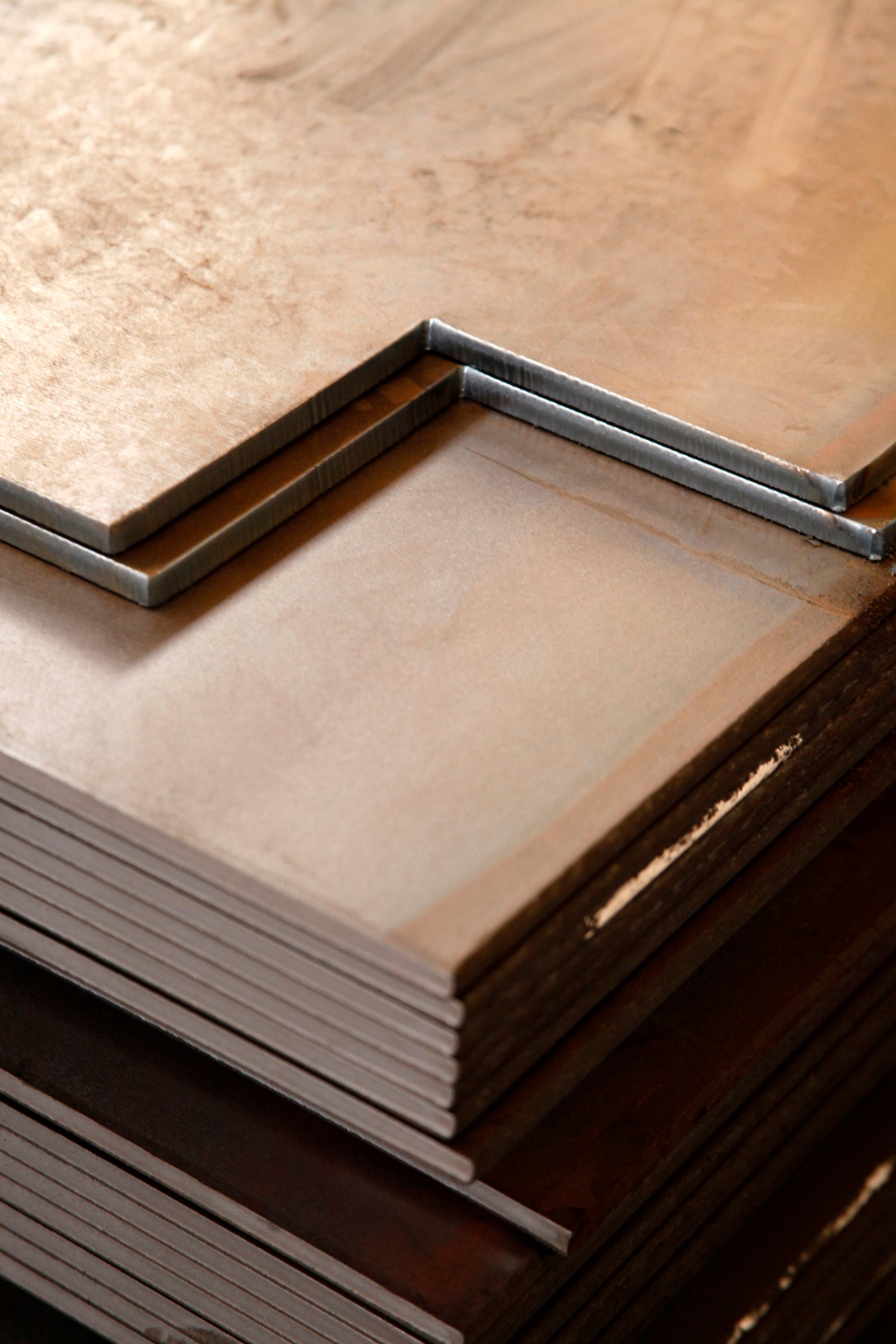
Applying the Rockwell Test to Austenitic Steels
The Rockwell B-scale (HRB) hardness test3 is the workhorse for quality control of austenitic stainless steel sheets, primarily due to its speed, simplicity, and non-destructive nature. For grades 304 and 316 in their typical annealed (softened) condition, the Rockwell B-scale (HRB) is the most appropriate and widely used standard. This scale utilizes a 1/16-inch diameter hardened steel ball as the indenter, combined with a major load of 100 kilogram-force (kgf). This combination is perfectly suited for materials that are relatively soft, like annealed austenitic steels, preventing the indenter from penetrating too deeply and providing sensitive, repeatable results.
A perfect example comes from my work with a major manufacturer of commercial kitchen equipment. They rely on MFY to supply large quantities of 304 stainless steel sheets with a 2B finish. For them, hardness is a critical incoming quality check. The HRB test is ideal for their needs; it's fast enough to be performed on samples from each coil without disrupting their production flow. A typical hardness value for annealed 304 or 316 stainless steel is in the range of 70 to 90 HRB. If a reading falls significantly outside this range, it can indicate an issue with the annealing process, potentially affecting the material's formability or durability.
However, it's essential to recognize the primary limitation of the Rockwell test: it is a point measurement. The result reflects the hardness in a very small, localized area. On a large stainless steel sheet, there can be minor variations in hardness across its surface due to the complexities of the rolling and annealing processes. To counteract this, a robust quality assurance program, like the one we implement at MFY, mandates taking multiple readings at different locations on a sample sheet—for example, at the edges and the center—to calculate an average value and ensure the entire sheet meets the customer's specification.
The Brinell Test's Role for 304 and 316
While Rockwell is ideal for day-to-day QC on sheets, the Brinell hardness test (HBW scale)4 serves a different but equally important purpose, especially for thicker materials. The Brinell method uses a much larger indenter, typically a 10 mm diameter ball, and significantly higher loads, often ranging from 500 to 3000 kgf. The resulting indentation is much larger than a Rockwell impression, and by measuring its diameter, the test effectively averages the hardness value over a wider area. This makes it less susceptible to small, localized inconsistencies in the material's microstructure, such as individual grains or small precipitates.
We see the value of the Brinell test when supplying thick 316L plates to clients in the chemical processing and shipbuilding industries. For a client in the Middle East constructing large chemical storage vessels, the structural integrity of the thick plates is paramount. The Brinell test provides a more representative "bulk" hardness value, which gives a better indication of the material's overall strength and resistance to deformation under the immense pressure the vessel will contain. A typical Brinell hardness value for annealed 304 or 316 stainless steel is in the range of 120 to 180 HBW.
The importance of this method is reflected in key industry standards. For instance, ASTM A240/A240M, the standard specification for Chromium and Chromium-Nickel Stainless Steel Plate5, Sheet, and Strip for Pressure Vessels and for General Applications, often provides maximum hardness limits in both Rockwell and Brinell scales. For example, for annealed 304, it might specify a maximum hardness of 92 HRB or 201 HBW. This dual-specification acknowledges the validity of both tests and reinforces our practice at MFY of using the most appropriate method based on the product form.
Comparing Test Results: HRB vs. HBW
Directly comparing Rockwell and Brinell is not about declaring one superior to the other; it’s about choosing the right tool for the job. The Rockwell test is fast, direct-reading, and excellent for thin sheets where a large Brinell impression might punch through or deform the sample. The Brinell test, while slower and requiring manual optical measurement, gives a more comprehensive average hardness value that is indispensable for thicker plates, forgings, or materials with a non-uniform microstructure. The choice is therefore dictated by the product's geometry and its end-use application.
Engineers often rely on hardness conversion charts, such as those found in ASTM E140, to estimate an equivalent hardness value6 from one scale to another (e.g., converting a known HBW value to an approximate HRB value). While these charts are incredibly useful for reference, I always stress to my clients that they are approximations. The underlying physics of the tests are different, and a converted value should never be used as a substitute for a direct measurement when strict compliance is required. The relationships in these charts were determined empirically and can have inherent inaccuracies.
This distinction is more than academic. We once worked with a new engineering contractor in Russia who had received a batch of material from a different supplier. The material test certificate showed a Brinell (HBW) value, which they had converted to Rockwell (HRB) and found to be acceptable on paper. However, their internal QC, which used a direct HRB test as specified in their purchase order, showed the material was too soft and failed their requirements. This discrepancy caused significant project delays. It's a powerful lesson that reinforced our own policy at MFY: we always perform the direct test method specified by the client to guarantee full compliance and eliminate any ambiguity, ensuring the material we deliver performs exactly as expected.
HRB is ideal for thin sheetsTrue
The Rockwell B-scale uses a small indenter and light load, making it perfect for thin, annealed stainless steel sheets without causing deformation.
Brinell measures single-point hardnessFalse
Brinell's large indentation averages hardness across a wider area, unlike Rockwell which measures localized hardness at a single point.
What challenges arise when measuring hardness using Rockwell and Brinell methods?
Have you ever received hardness test results that seem inconsistent or questionable? These discrepancies can stem from several challenges inherent in the testing methods themselves, potentially leading to disputes, project delays, and material rejection. Let’s identify these common pitfalls to avoid them.
Snippet paragraph: Key challenges in hardness testing for stainless steel include the influence of surface finish, insufficient material thickness causing an "anvil effect," and variations from work hardening. These factors can lead to inaccurate Rockwell or Brinell readings if not properly controlled.
Simply being aware of the challenges is not enough; a proactive approach is needed to mitigate them effectively. Inaccurate hardness readings are not just numbers—they have real-world consequences. I recall a situation with a distributor who questioned the hardness consistency in 304 stainless steel sheets7. The issue wasn't the material itself but the variation in their testing procedure. Their operator was testing too close to the edge of the samples, leading to artificially low readings. This highlights how operator skill and adherence to standardized procedures are just as vital as the calibration of the machine itself. For MFY, ensuring reliable and repeatable results is a cornerstone of our quality promise. It requires a deep understanding of factors like surface preparation, specimen support, and the minimum distance between indentations. By addressing these variables head-on, we can transform a potential point of contention into a confirmation of quality, providing our clients with the confidence they need in our materials.
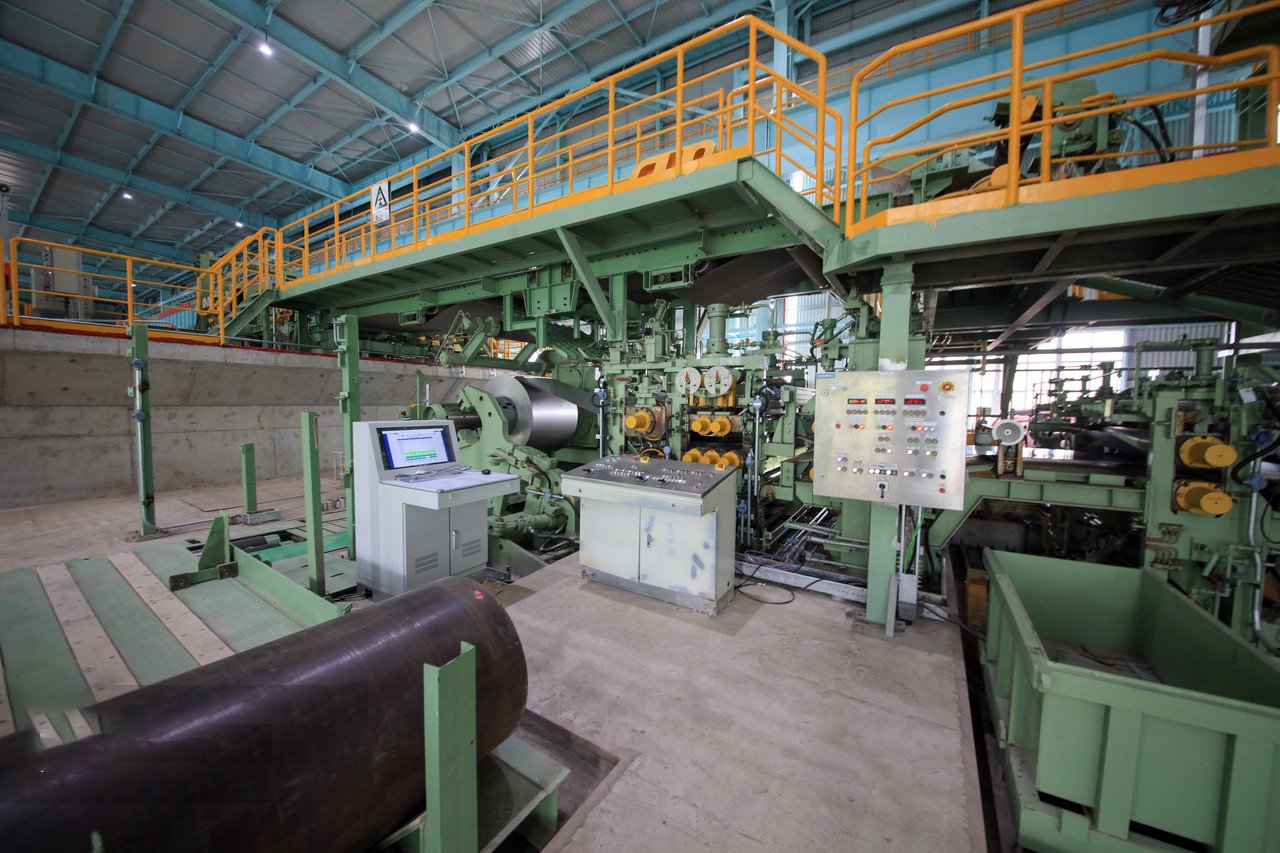
The Influence of Surface Condition and Preparation
One of the most significant challenges in obtaining accurate hardness readings is the condition of the material's surface. Both Rockwell and Brinell tests are sensitive to surface finish, but in different ways. The Rockwell test, with its small indenter, can be easily skewed by surface roughness, scale from heat treatment, or even minor scratches. An uneven surface can prevent the indenter from seating properly, leading to a shallower penetration and an erroneously high hardness reading. Conversely, a decarburized (carbon-depleted) surface layer from improper heat treatment can result in an artificially low reading that doesn't represent the bulk material's true hardness.
To overcome this, proper surface preparation is non-negotiable for achieving reliable results. The test surface must be smooth, flat, and free of any contaminants like oil, dirt, or oxide scale. For critical applications, this often means grinding or polishing a small area on the sample to create a suitable finish. At MFY, our quality control labs are equipped with metallurgical preparation equipment specifically for this purpose. We ensure that the surface finish of the test area meets the requirements laid out in standards like ASTM E18 for Rockwell testing8 and ASTM E10 for Brinell testing9, thus eliminating surface condition as a variable and ensuring the test measures the true hardness of the base metal.
This diligence is particularly important when dealing with different stainless steel finishes. A sheet with a standard 2B finish (a smooth, moderately reflective cold-rolled finish) might be suitable for testing with minimal preparation. However, a sheet with a rougher No. 1 finish (hot-rolled, annealed, and pickled) would almost certainly require surface grinding before a reliable Rockwell test could be performed. A client manufacturing precision medical devices once approached us after experiencing inconsistent hardness results. An investigation revealed their previous supplier's material had a variable surface finish, which their QC team wasn't correcting before testing. By providing material with a highly consistent surface finish and advising on proper preparation, we helped them achieve the repeatable measurements they required.
Specimen Thickness and Support Issues
A frequent and often overlooked source of error in hardness testing is insufficient material thickness, known as the "anvil effect." If the sheet or plate is too thin relative to the indentation depth, the deformation from the indenter can be affected by the hard support anvil underneath the sample. This support from the anvil resists the indentation, resulting in a measurement that is artificially high. As a general rule, the material thickness should be at least 10 times the depth of the indentation for Rockwell tests and 8 times for Brinell tests to ensure the reading is not compromised.
This is a critical consideration when testing thin-gauge stainless steel sheets. For example, using a standard HRB scale (100 kgf load) on a very thin sheet (e.g., under 0.8 mm) might violate this principle. In such cases, the solution is to switch to a "superficial" Rockwell scale, such as the HR15T or HR30T scale, which uses much lighter loads (15 or 30 kgf) and a more sensitive depth-measuring system. This ensures the indentation is shallow enough to be contained entirely within the material. We regularly guide our clients, especially those in the electronics and precision component sectors, on selecting the appropriate superficial scale for their thin-gauge materials.
Furthermore, the sample must be securely supported on the anvil. Any wobble, tilt, or vibration during the test can invalidate the result. The surface opposite the indentation must be held firmly against the anvil to ensure that all the applied force goes into creating the indentation and not into moving the sample. We recently helped a fabrication client in Turkey troubleshoot their testing process. They were getting inconsistent readings on 3mm thick plates. We discovered their test anvil was worn and slightly rounded, preventing the plates from sitting perfectly flat. After they replaced the anvil, their measurement repeatability improved dramatically, demonstrating that even the simplest mechanical factors can have a profound impact on accuracy.
Inherent Material Properties and Test Location
The intrinsic properties of austenitic stainless steels themselves can present challenges. As discussed, these materials are prone to work hardening. This means that any cutting or shearing operation used to prepare a test sample can harden the material at the cut edge. If a hardness test is performed too close to this work-hardened edge, the reading will be higher than the actual hardness of the bulk material. To prevent this, industry standards specify a minimum distance between indentations and from any edge. For example, the distance from the center of an indentation to the edge of the specimen should be at least 2.5 times the diameter of the Brinell impression or 3 times for Rockwell.
Another challenge arises from the grain structure of the material. While usually fine in sheets, coarser grains in thicker plates can lead to variations in hardness readings, especially with the localized Rockwell test. One reading might land on a softer grain, while another might land on a harder grain boundary. The Brinell test, with its large indentation, naturally averages out these micro-structural variations, which is why it is often preferred for materials with coarse or non-uniform structures.
At MFY, we build these best practices directly into our standard operating procedures. Our technicians are rigorously trained to select the correct test location on every sample, avoiding edges and previous indentations by the required distances. For critical applications, we often perform both Rockwell and Brinell tests and report both values, giving our clients a more complete picture of the material's hardness profile. This comprehensive approach, combining an understanding of the material's metallurgy with strict adherence to testing standards, is how we overcome the inherent challenges and deliver data that our clients can trust implicitly.
Surface finish affects hardness readingsTrue
Both Rockwell and Brinell tests are sensitive to surface roughness, scale, or scratches which can lead to inaccurate hardness measurements.
Thinner materials give higher hardnessFalse
Insufficient material thickness causes artificially high readings due to the anvil effect, not because the material is actually harder.
How can one overcome the challenges in hardness assessment for stainless steel sheets?
Are inconsistent hardness results creating bottlenecks in your quality control? Overcoming these challenges is not about having more advanced equipment, but about implementing a more rigorous process. By adopting best practices, you can ensure your measurements are both accurate and repeatable every time.
Snippet paragraph: To overcome hardness testing challenges, ensure proper surface preparation to remove scale and roughness, use the correct test scale for the material's thickness to avoid anvil effect10, and strictly adhere to standardized procedures for test location and machine calibration11.
Transforming hardness testing from a potential source of error into a reliable quality assurance tool requires a deliberate and systematic approach. It's about building a culture of precision. I've personally seen the difference this makes. We worked with an equipment integrator who was struggling with component failures. A joint audit revealed their hardness testing protocol lacked standardization—different operators used slightly different techniques. By helping them develop and implement a single, clear Standard Operating Procedure (SOP) based on ASTM standards, we helped them eliminate measurement variability. This not only solved their immediate failure issue but also improved their overall production efficiency. This experience proves that robust processes are the key. It's about controlling every variable, from machine calibration and environmental conditions to operator training and data interpretation, to build a system that produces trustworthy results consistently.

Implementing Rigorous Machine Calibration and Maintenance
The foundation of any accurate measurement is a properly calibrated and maintained instrument. Hardness testers, whether Rockwell or Brinell, are precision machines that can drift out of specification over time due to mechanical wear, environmental changes, or damage. A formal, documented calibration program is not an optional extra; it is an absolute necessity for any organization that relies on hardness data for quality assurance. This program should include regular verification checks performed in-house using standardized test blocks.
These test blocks are pieces of metal with a very uniform hardness that has been certified by a national standards laboratory. Before starting a series of tests, the operator should perform a check on a test block of a similar hardness to the material being tested. If the machine's reading falls outside the certified tolerance of the block, the machine should not be used until it has been serviced and recalibrated by a qualified technician. At MFY, this daily verification is a mandatory first step in our QC labs. Our machines also undergo a full professional calibration on a semi-annual basis, with all results logged and tracked. This creates a chain of traceability that gives us—and our clients—complete confidence in our reported values.
Moreover, routine maintenance is crucial. Indenters, especially the steel balls used in the Rockwell B-scale and Brinell tests, can become flattened or deformed over time, which will lead to inaccurate readings. They must be inspected regularly and replaced as needed. The support anvil must be kept clean and free from nicks or wear. By treating the hardness tester with the same care as any other precision metrology tool, we ensure its long-term reliability and accuracy, preventing the "garbage in, garbage out" scenario that plagues so many testing environments.
Adherence to Standardized Testing Procedures (SOPs)
Even with a perfectly calibrated machine, results will be inconsistent if the test is not performed correctly and repeatably. The single most effective way to ensure consistency is to develop and enforce a detailed Standard Operating Procedure (SOP) that is grounded in established industry standards like ASTM E18 and E10. This SOP should leave no room for ambiguity and should govern every step of the process, from sample preparation to recording the final result. It provides a clear recipe for every operator to follow, eliminating variations caused by individual techniques or habits.
The SOP must detail critical parameters such as the minimum sample thickness for each scale, the required surface finish, the load application time (dwell time), and the spacing requirements between indentations and from edges. For example, the SOP should explicitly state that at least three indentations should be made on each sample and the average reported, which provides a more statistically representative value. It should also include instructions on how to handle non-flat samples, such as pipes or curved sheets, which may require specialized anvils or fixtures to ensure stability during the test.
At MFY, every technician in our quality department is trained not just on how to operate the machine, but on the why behind each step in the SOP. This deeper understanding fosters a greater sense of ownership and diligence. We conduct regular refresher training and proficiency testing to ensure these standards are maintained. When we onboard a new major client, we often share our testing SOP with their quality team. This transparency builds trust and helps align our respective measurement processes, preventing potential discrepancies down the line and fostering a true partnership approach to quality.
Enhancing Accuracy with Advanced Techniques and Cross-Validation
For the most critical applications, relying on a single test method may not be sufficient. A more robust approach involves cross-validation, where results from different methods are used to build a more complete and reliable picture of the material's properties. For instance, on a thick plate, we might perform a Brinell test to get a reliable bulk hardness value and then use a portable Rockwell tester to check for hardness uniformity across the plate's surface. The two tests provide complementary information that increases confidence in the overall assessment.
Another advanced technique is the use of automated hardness testing systems. These systems use digital imaging and software to control the test cycle, measure the indentation, and record the results, which significantly reduces the potential for human error, especially in high-throughput environments. While the initial investment is higher, the gains in repeatability and efficiency can be substantial. For MFY's high-volume product lines, we have integrated such automated systems into our process to ensure every coil meets our stringent internal standards.
Lastly, we actively engage in round-robin testing with certified third-party laboratories. This involves sending identical samples to our own lab and an independent lab and comparing the results. This practice serves as an external audit of our equipment, procedures, and personnel. If any significant bias or discrepancy is found, it triggers a root cause analysis and corrective action. This commitment to external validation is the ultimate step in overcoming testing challenges. It ensures that the hardness values on an MFY test certificate are not just accurate within our own walls, but are accurate and defensible by global standards.
Calibration prevents hardness tester driftTrue
Regular calibration using standardized test blocks ensures hardness testers maintain accuracy over time.
Single indentation gives reliable hardnessFalse
ASTM standards require at least three indentations per sample for statistically valid results.
What are the technical recommendations for selecting the appropriate hardness test?
Are you confident you're choosing the most effective hardness test for your specific stainless steel application? Selecting the wrong one can be a costly mistake, providing data that is either irrelevant or misleading. A strategic choice ensures your material is perfectly qualified for its purpose.
Snippet paragraph: Select the Rockwell test12 (specifically HRB or superficial scales) for thin sheets and routine quality control due to its speed. Choose the Brinell test13 (HBW) for thicker plates (>3mm), castings, or when a bulk hardness measurement that averages microstructural variations is required.
The decision between Rockwell and Brinell is a critical fork in the road of material qualification. It’s a choice that should be driven by a clear-eyed assessment of the material's form and the demands of its final application. It’s not simply a matter of preference; it’s about aligning the test methodology with the engineering reality. I often consult with clients who are developing new products and are unsure which hardness specification to apply. My first questions are always about the material's thickness and its end-use environment. Will it be formed? Welded? Subjected to abrasion? The answers to these questions guide us toward the most meaningful test. This consultative process ensures that the hardness value we specify and test for is a true performance indicator, not just a number to fill a box on a data sheet, ensuring the material succeeds in the real world.
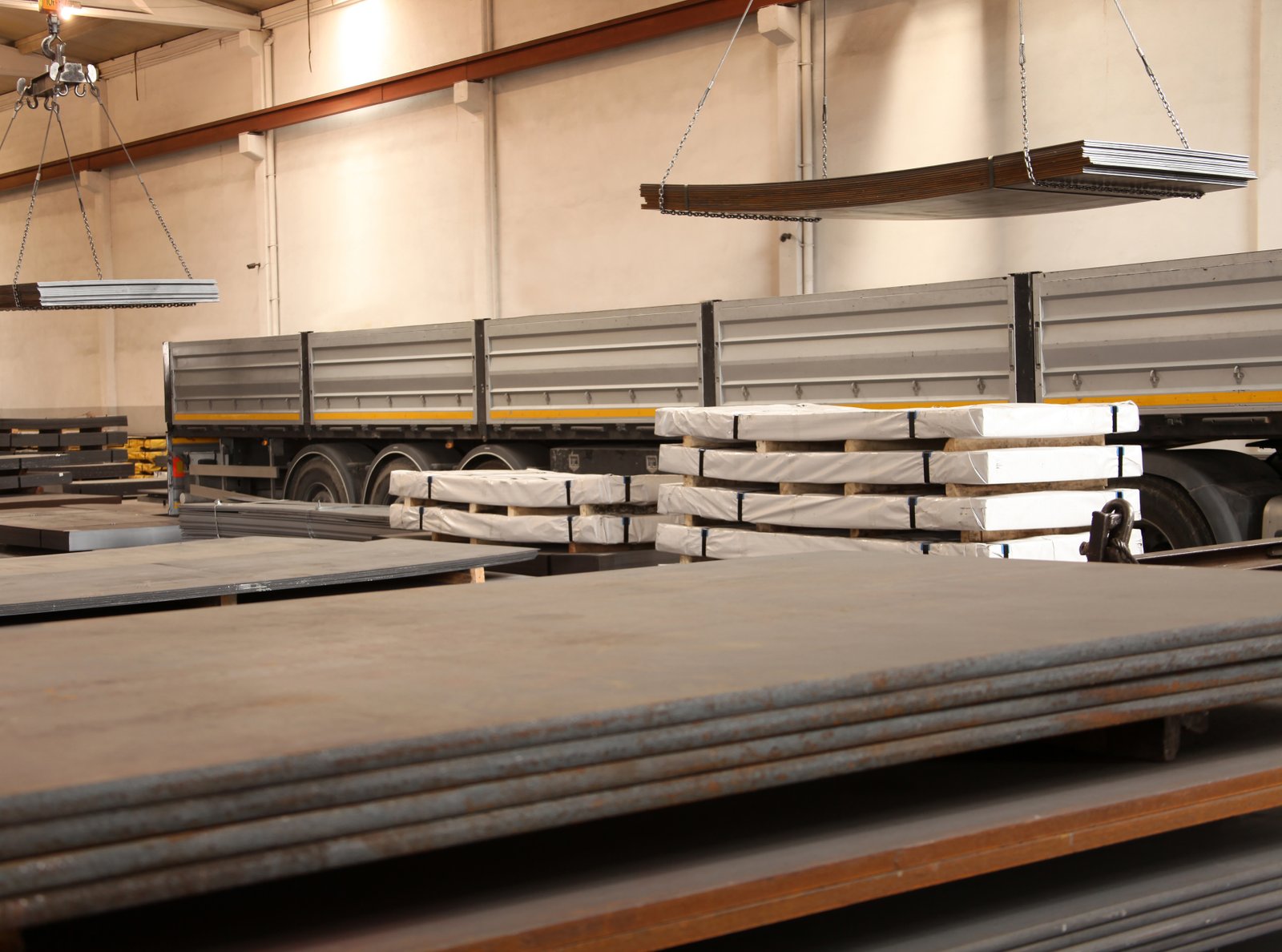
Decision Criteria Based on Material Thickness and Form
The single most important factor when choosing between Rockwell and Brinell is the thickness of the stainless steel. The test must be conducted without the influence of the support anvil, as previously discussed. This creates a clear decision boundary. For thin-gauge stainless steel sheets, typically those under 3 mm (approx. 1/8 inch), the Rockwell test is almost always the correct choice. Even within the Rockwell system, the specific scale must be chosen carefully. For sheets between approximately 0.8 mm and 3 mm, the standard Rockwell B-scale (HRB) is appropriate. For sheets thinner than this, it is essential to move to a superficial Rockwell scale, such as the HR30T or HR15T, which use lighter loads to prevent punching through the material.
For thicker materials, such as plates, bars, or forgings with a thickness greater than 3 mm, the Brinell test becomes the more suitable and often preferred method. The heavy load and large indenter of the Brinell test are ideal for these substantial product forms. The large impression provides a more representative measure of the material's bulk hardness, averaging out the minor inconsistencies inherent in the microstructure of thicker sections. Using a Rockwell test on a very thick plate is not necessarily wrong, but its localized nature may not provide the comprehensive structural data that a Brinell test offers.
I recall a project with an engineering contractor building a pedestrian bridge with thick 316L structural plates. Their initial specification only called for a Rockwell hardness value. We strongly recommended adding a Brinell requirement to the specification. The Brinell test provided a much better assurance of the overall structural hardness of the plates, which was the critical property for this load-bearing application. By educating the client on the benefits of Brinell for their specific product form, we helped them create a more robust and safer specification.
Selection Based on Application and Material Condition
The intended application and the condition of the material are also key drivers in the selection process. For routine quality control in a fast-paced production environment, the speed of the Rockwell test is a significant advantage. A test can be completed in seconds, allowing for a high volume of checks to ensure process consistency. This is why it's the standard for assessing incoming coils and sheets at manufacturing plants that are stamping, forming, or bending the material. The goal is to quickly verify that the material is in its specified condition (e.g., annealed) and will behave as expected in their machinery.
Conversely, when the material's microstructure is expected to be coarse or non-uniform, such as in a casting or a heavy forging, the Brinell test is superior. The small Rockwell indenter could land on a hard carbide particle or a soft ferrite pool, giving a reading that is not representative of the component as a whole. The large Brinell impression spans across many grains and phases, effectively smoothing out these local variations and providing a macro-hardness value that better reflects the overall performance of the part. This is why Brinell is almost exclusively specified for cast stainless steel components used in pumps and valves.
The material's condition, particularly whether it has been work-hardened, also plays a role. While annealed 304/316 is tested on the HRB scale, a heavily cold-worked (e.g., full-hard temper) stainless steel sheet becomes much harder and would require a different scale. In this case, the Rockwell C-scale (HRC), which uses a diamond indenter and a heavier load (150 kgf), would be the appropriate choice. Selecting the wrong scale—for instance, using HRB on a very hard material—would result in a flattened indenter ball and an inaccurate reading.
Adhering to Industry Standards and Customer Specifications
Ultimately, the choice of test is often dictated by the governing industry standard or the client's specific engineering drawing. Standards from organizations like ASTM, ISO, or EN provide the framework that ensures everyone in the supply chain—from the steel mill to the end-user—is speaking the same language. For example, if a customer's purchase order for pressure vessel plates references ASTM A240/A240M14, and that standard specifies a maximum hardness of 201 HBW, then a Brinell test is mandatory for acceptance. A Rockwell test would not be a valid substitute unless explicitly permitted by the client.
As a supplier, our primary responsibility is to adhere strictly to these specifications. At MFY, our order review process includes a meticulous check of all specified standards and hardness requirements. Our technical team reviews the customer's drawings and specifications to ensure we use the correct test method, scale, and load. If we notice a potential conflict—for example, a client specifying a Brinell test on a very thin sheet where it would be inappropriate—we proactively engage with them.
This consultative approach is a key part of our service. We don't just supply steel; we provide solutions. By explaining the technical reasoning—why a superficial Rockwell test would provide more reliable data for their thin component—we can help the client amend their specification to be more practical and meaningful. This collaborative process prevents future disputes and ensures the material is qualified using the most appropriate and reliable method possible, safeguarding the integrity of their final product.
Rockwell is best for thin sheetsTrue
Rockwell tests (HRB or superficial scales) are recommended for thin stainless steel sheets under 3mm due to their precision and speed.
Brinell works for all thicknessesFalse
Brinell tests are unsuitable for thin materials below 3mm as they may be affected by the support anvil.
Conclusion
Choosing the right hardness test—Rockwell for thin sheets and QC, Brinell for thick plates—is critical for qualifying 304 and 316 stainless steel. Adhering to strict testing procedures and standards is essential to ensure material reliability, optimize performance, and guarantee project success.
-
Understand the advantages and applications of 304 and 316 stainless steel grades ↩
-
Learn how molybdenum enhances the corrosion resistance in 316 stainless steel. ↩
-
Discover how the HRB scale is used for testing austenitic stainless steels. ↩
-
Explore why Brinell is preferred for thicker materials. ↩
-
Gain insight into the standard specifications for stainless steel plates. ↩
-
Understand the process of converting hardness values between different scales. ↩
-
Learn the impact of testing near edges on hardness accuracy ↩
-
Understand Rockwell testing standards and specifications ↩
-
Get insights into standards for Brinell hardness testing ↩
-
Learn about potential errors caused during material hardness testing ↩
-
Understand the importance of calibration in maintaining measurement accuracy ↩
-
Learn about the quick and efficient Rockwell test for thin materials ↩
-
Discover why Brinell is preferred for thicker materials ↩
-
Understand the ASTM specifications for stainless steel hardness testing ↩
Have Questions or Need More Information?
Get in touch with us for personalized assistance and expert advice.
